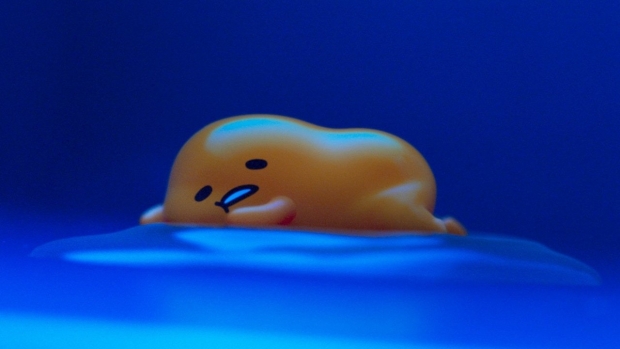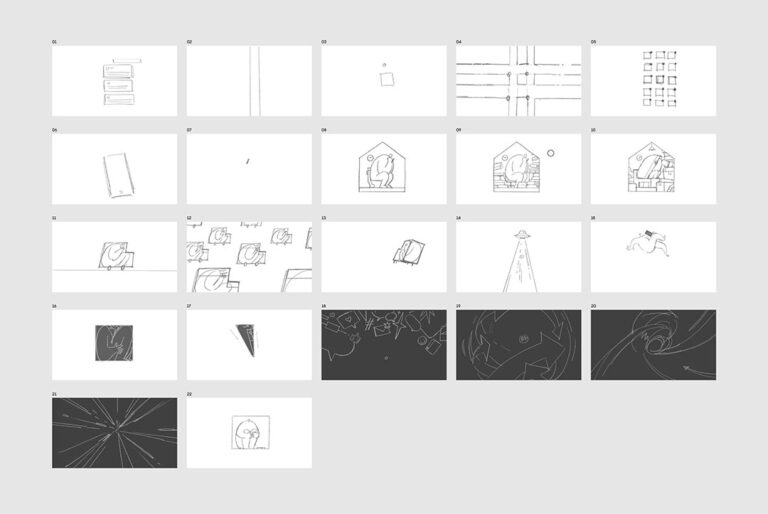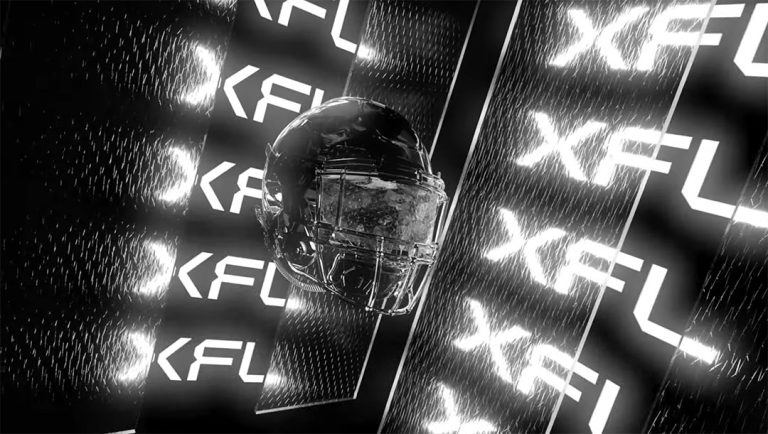Were there any parts of the film that were particularly difficult to animate?
I worked with animation director Marie-Laure Guisset, and we came up with this style together. When I started developing the film, I was inspired by live-action filmmakers like Wes Anderson, Jacques Tati, Federico Fellini, and Yasujiro Ozu, as well as animated films like Porco Rosso and Ernest & Celestine. In my opinion, all these filmmakers mix realistic storytelling with magical moments and human meetings. They use framing, tempo, and colors to drag the audience in.

Other parts could be more difficult. Like scenes with very little action, but that demanded a lot of acting and emotion. We asked the animators to do very small adjustments and remove big movements, and to trust the audience and the mood in the scene. Sometimes it is difficult to see the humor in the small, underplayed stories before you see it with sound and in context. I feel that it is in an animator’s blood to move the characters so in the beginning, they had to be convinced that it would work.
Titina is currently doing the festival rounds. It just finished screening at the New York International Children’s Film Festival and won the Tokyo Anime Award Festival’s excellence award. The film’s producers, Mikrofilm in Norway and Vivi Film in Belgium, were also nominated for European producers of the year at this month’s Cartoon Movie pitching and co-production forum in Bordeaux, France.
Kajsa Næss: All the main characters, most of the Norwegians, and the airship crew are based on real people. It was important for us to keep some reference to them. I wanted them to be recognizable. That is why I worked with Siri Dokken as character designer. She is a well-known cartoonist here in Norway and her caricatures are amazing. Her drawings have a lot of character and emotion. She makes characters with volume and life and a visible story. She has an excellent eye for flaws and small emotional soft spots in a character. A character is never only one thing. She had never worked in animation before, but I was sure she would be great and had no doubt she could not do it.
We’ve been tracking Kajsa Næss’ hand-drawn feature Titina for several years now, and we’re thrilled that we now get to share an exclusive making-of video about the film.
Cartoon Brew: In telling a true-ish story, you were faced with the task of animating real people from history. How did you approach that challenge?
In addition to sharing the behind-the-scenes video, Næss joined Cartoon Brew to discuss developing the film’s look, animating history, and adding levity to a grounded story.
The characters were actually the first thing we developed and we used them to get funding and financing. It worked very well. Then our art director Emma McCann did an excellent job creating the style of the characters. Her thin lines and beautiful swirls matched Siri’s characters very well, and I think their integration feels fabulous.
We wanted to tell this classical heroic expedition story from a new, female perspective. I wanted to make a warm, but also sharp and fun, story about this strange and quite sad story. I wanted to play with the ideas we have about history, ambitions, and characters from other cultures, about what we are told about heroes, villains, and ordinary people. We are used to the heroic or the sad story, but we wanted to mix the two and try to question the heroic story a bit. (In Norway Roald Amundsen is one of our biggest heroes…. No one messes with him!) The fascists had to be fun, but also evil. We needed them to feel a bit dangerous too. Not only stupid.
Could you talk a bit more about that? The film is grounded in reality, but still has a great sense of playfulness and humor that is often best expressed through animation.
I have always liked the mix between realism and comedy/cartoon animation. I want the animated films I make to have some connection to reality, to make us feel like the stories are about real people, about us, the audience. I want the people in the audience to recognize themself in the stories I tell. I like the idea of the fragility in us and the characters. That we have small flaws that we try to hide and overcome, but sometimes these actions cannot be hidden.






